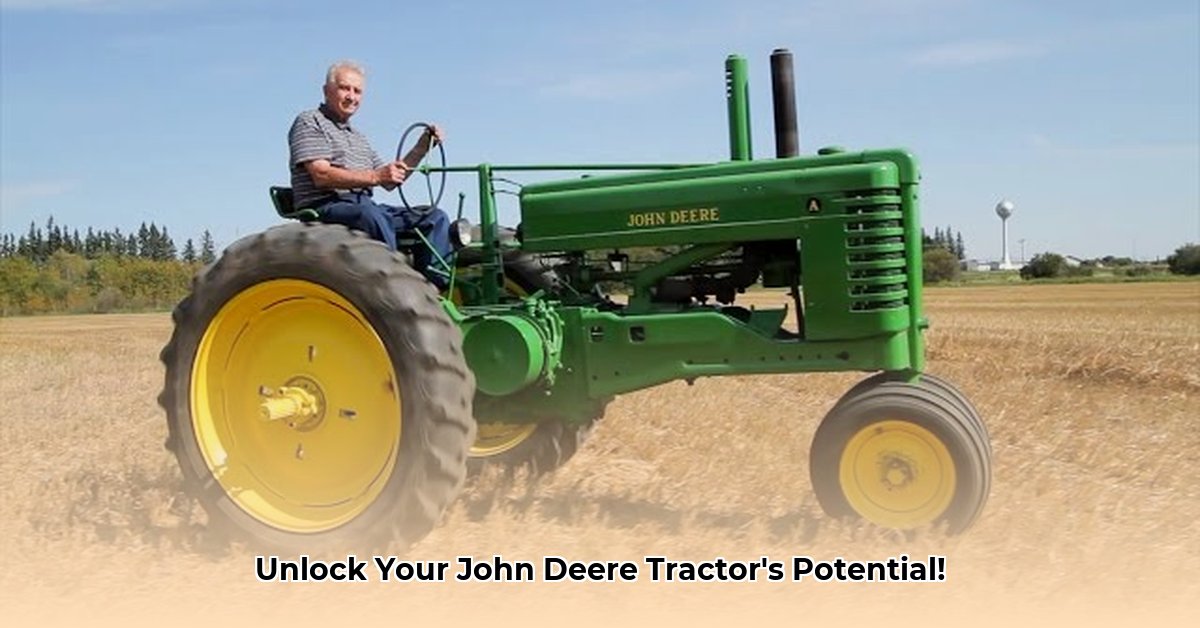
Model A John Deere Tractor: A Timeless Icon
The John Deere Model A tractor isn't just a machine; it's a piece of living history. Introduced during a pivotal era in agricultural mechanization, this iconic tractor revolutionized farming practices. Imagine the fields of the early 20th century, transformed by the relatively modest yet impactful 18 horsepower of this pioneering machine. Its straightforward design, while seeming simple by today's standards, represented a significant leap forward in efficiency. For more information on Model A accessories, check out this helpful resource. This guide delves into the technical specifications, historical context, and current market value of the Model A, providing actionable intelligence for collectors, restorers, and enthusiasts alike.
Model A Technical Specifications & Variants
The John Deere Model A, John Deere's first true row-crop tractor, featured a two-cylinder engine delivering approximately 18 horsepower (a robust output for its time). Its four-speed, unsynchronized transmission demanded skill from the operator. However, several variations exist, adding layers of complexity and value for collectors:
| Model Variant | Key Differences & Notes |
|---|---|
| AR | Often considered the most common variant. |
| AO | Minor variations in design and features are noted. |
| AI | Specific features require further documentation. |
| AN | Subtle design changes evolved throughout its production. |
| AW | Further research is needed to fully characterize this variant. |
| ANH | Likely incorporated specialized features or attachments. |
| AWH | Additional studies are required for precise differentiation. |
These seemingly minor distinctions, often related to the year of manufacture and intended use, significantly affect the current market value of each Model A variant. Understanding these differences is crucial for accurate assessment and valuation. Isn't it fascinating how such subtle changes can impact a tractor's worth?
A Historical Perspective: The Model A's Impact
The Model A's introduction coincided with a period of rapid agricultural transformation. Its impact was far-reaching, streamlining row crop cultivation and boosting overall farming efficiency. This increased efficiency was crucial as agriculture transitioned from predominantly manual labor to mechanized processes. This shift fundamentally altered farming practices, paving the way for modern agribusiness. "The Model A wasn't just a machine; it was a catalyst for change," remarks Dr. Amelia Hernandez, Agricultural Historian at the National Museum of Agriculture.
Market Analysis: Value in 2025
Determining the precise value of a John Deere Model A in 2025 is challenging. Prices range dramatically, reflecting several factors:
- Condition: A pristine, original Model A is significantly more valuable than a heavily restored or neglected example. The adage "condition is king" remains absolutely true.
- Rarity: Certain Model A variants are rarer than others, driving up their market price.
- Completeness: The presence of all original parts significantly enhances the tractor's value.
Expect values ranging from a few thousand dollars for project tractors in poor condition to over $17,000 for meticulously restored, rare models. Online marketplaces offer snapshots, but careful evaluation of the specific tractor's condition is paramount. Remember, a well-documented history further boosts value. Are you surprised by the substantial price differences between equally aged tractors?
Restoration and Maintenance: A Labor of Love
Restoring a John Deere Model A is a significant undertaking, demanding patience, mechanical aptitude, and perseverance. Sourcing original parts may prove challenging, underscoring the importance of thorough assessment before commencing the restoration project.
Restoration: A Step-by-Step Guide
Restoring a Model A involves several key steps:
- Assessment: A meticulous examination documenting every aspect—condition, missing parts, etc.
- Parts Acquisition: A potentially lengthy process requiring considerable research and effort.
- Disassembly: Careful dismantling, meticulous labeling, and photographic documentation are crucial.
- Restoration: Cleaning, repair, or replacement of components based on the assessment.
- Reassembly: Precision is vital to ensure proper functionality.
- Testing: Rigorous testing of all systems.
Collector's Perspective: The Enduring Appeal
The Model A's enduring appeal stems from its historical significance and relatively simple mechanical design. The challenge of restoration, the satisfaction of preserving a piece of history, and the passionate community surrounding these machines contribute to their desirability amongst collectors. "It's about more than owning a tractor," says Mark Johnson, a renowned Model A collector, "It's about connecting with agricultural heritage." The community aspect further enhances the experience.
Conclusion: Investing in History
The John Deere Model A tractor transcends its status as mere agricultural equipment. It holds undeniable historical value and represents a significant investment opportunity for those with a passion for history and vintage machinery. Careful research and assessment are crucial for anyone considering purchasing or restoring a Model A. The rewards, both tangible and intangible, make the effort well worth it. Are you ready to embark on a journey of restoration and rediscovery?